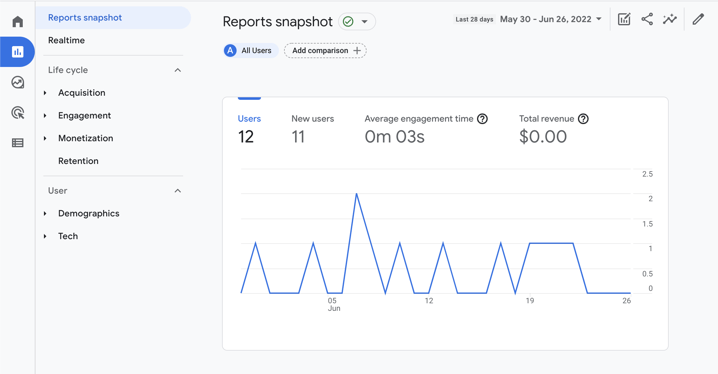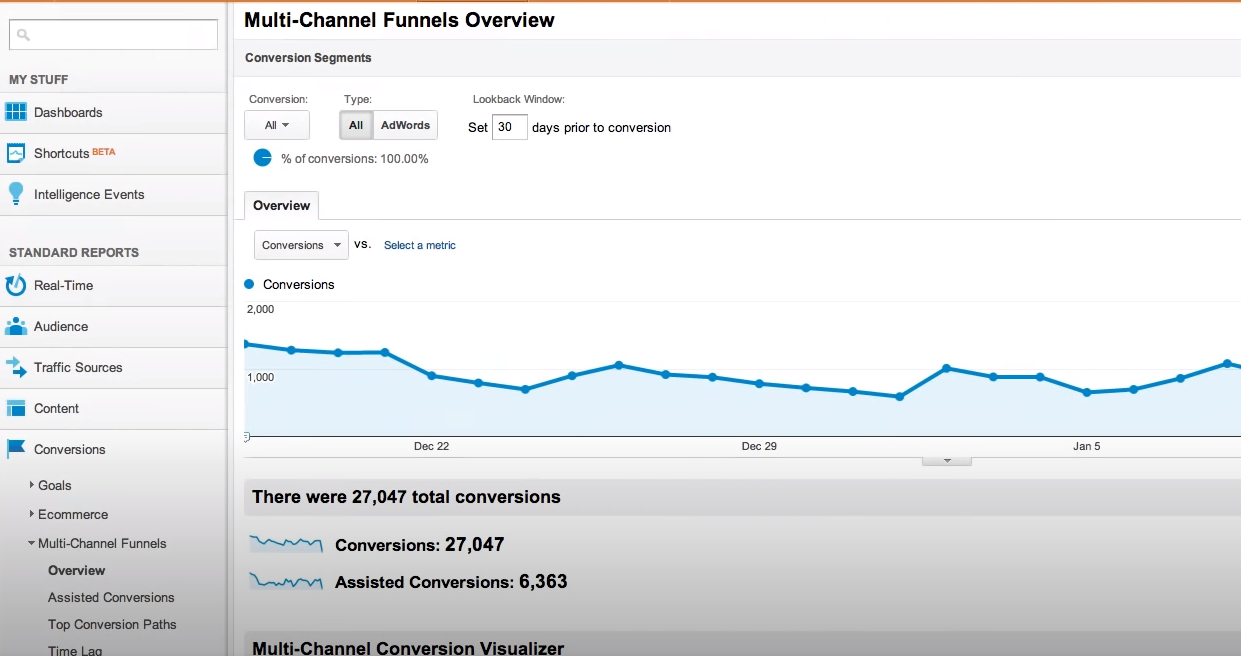Comprehensive Guide: What Data Does Google Analytics Prohibit Collecting?
Comprehensive Guide: What Data Does Google Analytics Prohibit Collecting?
Blog Article
Leveraging Google Analytics for In-Depth Insights Into Customer Actions and Interaction
In the digital landscape where individual habits and involvement hold the vital to on the internet success, leveraging tools like Google Analytics has actually come to be critical for organizations looking for to comprehend their target market's interactions with their platforms. This sophisticated analytics platform offers a wealth of information that can unveil elaborate information regarding how customers browse internet sites, engage with material, and eventually transform - what data does google analytics prohibit collecting. By using Google Analytics, organizations can uncover beneficial understandings that exceed surface-level metrics, giving an extensive understanding of user behaviors and preferences
Comprehending Individual Actions Via Google Analytics
Using Google Analytics offers a detailed understanding of user actions on electronic systems. By analyzing data such as the variety of visitors, their geographical areas, the pages they see, and the actions they take, businesses can acquire valuable understandings into exactly how customers connect with their applications or internet sites. This info enables informed decision-making, allowing companies to optimize their on-line existence for boosted user experience and involvement.
One trick element that Google Analytics assists to reveal is customer website traffic patterns. By tracking metrics like the source of website traffic, recommendation links, and prominent search phrases, companies can recognize what drives individuals to their system. what data does google analytics prohibit collecting. This understanding help in customizing marketing methods to target certain demographics or rate of interests efficiently
Additionally, Google Analytics provides thorough records on customer involvement, showcasing metrics like bounce rates, session periods, and conversion prices. Comprehending these metrics gives valuable comments on the effectiveness of web content, design, and total customer experience, empowering organizations to make data-driven enhancements and drive much better results. Basically, Google Analytics acts as an effective tool for analyzing individual habits and optimizing digital platforms for success.
Studying Website Website Traffic Patterns
Recognizing the circulation of web traffic on a website is essential for maximizing its efficiency and enhancing individual engagement. Evaluating site web traffic patterns gives important understandings into how users connect with the site, what material they find most appealing, and where they may be running into barriers. By leveraging devices like Google Analytics, site owners can track metrics such as page sights, one-of-a-kind visitors, bounce prices, and average session duration to obtain a comprehensive understanding of customer behavior.
Researching website traffic sources is critical in identifying where visitors are coming from, whether with natural search, social networks, recommendations, or direct website traffic. This details helps in tailoring advertising and marketing methods to target certain audiences properly. In addition, assessing the habits flow within the web site can highlight preferred landing web pages, departure web pages, and one of the most typical paths users take via the site. Determining these patterns makes it possible for internet site owners to make informed choices regarding content placement, navigating renovations, and overall site design to improve individual experience and drive conversions.
Monitoring User Engagement Metrics
To strengthen the understandings acquired from assessing site traffic patterns, it is vital to concentrate on tracking customer engagement metrics. User interaction metrics give important details regarding how site visitors connect with a site, indicating the level of interest and complete satisfaction with the web content. By tracking metrics such as bounce rate, typical session duration, pages per session, and conversion rates, internet site proprietors can comprehend the effectiveness of their web content and customer experience.
Bounce price measures the percent of visitors that browse away from the website after watching just one web page, showing whether the material is appealing and pertinent. Average session duration exposes just how much time site visitors invest in the website, mirroring their degree of interest. Pages per session statistics shows the average number of web pages site visitors see throughout a session, suggesting the deepness of expedition. Conversion prices track the percent of site visitors that finish a wanted activity, such as Website purchasing or filling up out a form, showing the effectiveness of the internet site in driving customer actions. By analyzing these user engagement metrics, internet site owners can make informed decisions to maximize their web content and individual experience to boost interaction and accomplish their objectives.
Identifying Conversion Opportunities
Recognizing prospective conversion opportunities is a vital aspect of maximizing internet site performance and attaining desired user actions. Via Google Analytics, services can reveal important understandings that can help in determining locations where users are handing over or otherwise continuing to the preferred conversion activities. By evaluating metrics such as conversion rates, touchdown web page efficiency, and user flow, organizations can pinpoint prospective bottlenecks in the conversion process.

Additionally, making use of Google Analytics' behavior circulation feature can give an aesthetic representation of just how customers browse through the web site. This can help in recognizing popular paths along with any type of obstructions that may be hindering conversions. By leveraging these understandings, companies my website can enhance their web site for enhanced customer experience and boosted conversion rates.
Enhancing User Experience With Data-Driven Insights
By leveraging data-driven understandings from Google Analytics, companies can tactically optimize their site to improve customer experience and drive higher conversion rates. Recognizing user behavior via information analysis enables business to customize their web sites to meet the particular requirements and preferences of their target audience. By determining key metrics such as bounce Find Out More rates, session period, and preferred pages, services can gain valuable insights right into just how users connect with their website.
Google Analytics offers thorough details on customer demographics, tools used, and also the specific activities taken on the web site. This information allows services to make informed choices on internet site style, content positioning, and overall customer circulation. By leveraging these insights, companies can develop a much more interesting and individualized individual experience, bring about enhanced fulfillment and commitment.
Additionally, data-driven insights can help companies recognize pain points in the individual journey and execute targeted enhancements to improve the conversion process. By continuously examining and checking customer behavior, organizations can adjust and maximize their site to make certain a delightful and seamless experience for site visitors, inevitably driving greater conversion prices and making the most of business success.

Conclusion
In verdict, Google Analytics gives useful insights into customer behavior and involvement on websites. By evaluating web traffic patterns, tracking engagement metrics, and identifying conversion possibilities, services can make data-driven decisions to enhance the individual experience. Leveraging these understandings can cause improved website performance and enhanced conversions.
By tracking metrics such as bounce price, typical session duration, pages per session, and conversion prices, internet site proprietors can recognize the performance of their content and individual experience.
Conversion rates track the portion of site visitors who finish a wanted activity, such as loading or making a purchase out a kind, reflecting the efficiency of the site in driving individual activities. By assessing these customer engagement metrics, web site owners can make informed decisions to optimize their material and user experience to enhance interaction and attain their objectives.
By leveraging these understandings, services can enhance their site for improved individual experience and boosted conversion rates.
By leveraging data-driven understandings from Google Analytics, companies can tactically enhance their web site to boost user experience and drive higher conversion rates.
Report this page